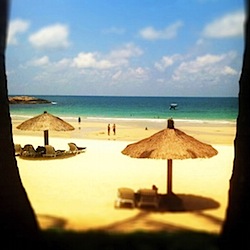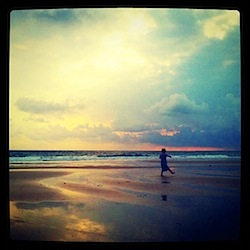“WP Troubleshooting Tips From the Trenches” plus 1 more |  |
| WP Troubleshooting Tips From the Trenches Posted: 27 Apr 2011 11:00 AM PDT This guest post is by Dan Sheehan of DSConstructiontahoe.com. I’m one of those types who believe when something’s working fine, it’s a good time to mess with it. After all, isn't that how progression and innovation happen? My construction business had been slow so I decided to build my own website during some down-time. I learned a lot about WordPress and SEO through my toying, tweaking, and dismantling of this website, and I think my tips might help newbies and seasoned WordPressers alike! Google Webmaster ToolsIf you haven't already, I highly recommend that you sign up for a free Google Webmaster Tools account. Much of the following post is based on the information you can get from this extremely important tool. It is never fun to go to your Google Webmaster Tools account to find that the Googlebots have been discovering pages of your site that you never knew existed, or URLs that are non-existent. Or to find that your home page isn’t being indexed because there’s a trailing slash on the end of your home URL. The worst was when I found that both the www and non-www versions of my URL were being indexed—that’s not good for SEO. Redirection and link juice pluginsAlong the journey, I’ve tried many plugins. One thing I have tried to do is use as few a plugins as possible in an attempt to make my site as fast as possible (since Larry Page is such a speed freak). I present here are a few plugins that I have found help my site play nice with Google, and are well worth the weight they add to my WP installation. After changing my permalink structure four or five times and my domain name twice, I had a mess that Google pointed out to me under the "crawl errors" and "html errors" sections in the Webmasters tools. Two plugins helped clean up a lot of this mess: Redirection and Link Juice Keeper. The Redirection plugin allows you to place a 301 redirect on any URL within the domain. To tell you the truth, in many cases I had no idea where these bad URL's came from—I only knew that Google was telling me they were crawl errors. And the reasons as to how I got all those errors are beyond the scope of this post. When you use a 301 redirect, any PageRank from that homeless page transfers to the page you are 301-redirecting to. Link Juice Keeper (or LJK) is what I use to basically clean up all the bad URLs for which I can’t find a page to redirect to. LJK automatically redirects all non-existent URLs and 404 errors to your home page. So after you go through and 301-redirect URLS that can be pointed to good, specific pages, you can let LJK pick up the rest—plus any others that pop up. However, keep in mind that any of the subsequent redirections that LJK makes might be better replaced by a redirection to a more appropriate page on your site, so it’s good periodically to check for any new errors, and properly redirect them if possible, rather than just letting them go to your home page. By giving a home to all these "homeless pages" you are preserving any link juice that those pages have within your domain. If a page with a bad URL can be found on the ‘net, then it has value—but not if it goes to a "page cannot be found” page. Why not make use of all those pages and have them become paths to the content that you want to rank for? Anti-spamming pluginsAnother great plugin I came across is cbnet Ping Optimizer. Did you know that every time you make an edit to a post or a page on your WordPress blog, you’re pinging a bunch of update services like Google, Technorati, and many more? This action lets them know that you have some new content and that they should send over their crawlers to take a look. That’s great … unless you’re like me, and are constantly correcting some spelling, or tweaking your pages on a very regular basis. Maybe you’re reformatting a post, and keep updating and publishing over and over until it looks just right. While you’re consciously improving your content, you’re also making yourself out to be a spammer in the eyes of those update services. What cbnet Ping Optimizer does is control those pings so that you only ping the update services when you create something new (a post or a page)—not when you edit an existing post or page. If you’ve made a bunch of edits that have significantly changed the page or post, then you can go ahead and manually force-ping the services. A Firefox addon that’s been helpful to me is SEO Doctor. SEO Doctor provides great SEO-related information about the page that’s displayed in your browser. It will let you know, for example, if you are using two H1 tags (not good), as well as many other SEO blunders. SEO Doctor told me that an important page on my blog was not being indexed because of a canonical link issue. In the end I found that the plugin All In One SEO was the culprit. Once I unchecked the Canonical URLs option, the issue resolved. I still love AIO SEO and find it invaluable, but without SEO Doctor, I’d never have found this problem. Site Meter: a handy watchdogThe other day, I had noticed from my Site Meter account that Google was indexing my site with both www and non-www URLs. Site Meter, unlike many other trackers, shows Googlebot visits, which I love. I was able to see that Google actually came to my site using specific keyword search terms! Tracing these back to the SERPs, I saw that there were both forms of the URLs in the search results. After an unrelenting research, I came across a website that mentioned the same WordPress problem. The author disabled the plugin W3 Total Cache and the problem was resolved. I cleaned up my .htaccess file and reordered the rewrite rules and that seemed to fix it, but I’m skeptical. To be sure it does not happen again, I made the non-www URL (www is my preferred format) the link I use to check out my site from my desktop and bookmarks. So when I click the link, I look in the Address bar of the browser to be sure that the non-www URL resolves to the www version. The last thing you want is to make Google unhappy with you. For the beginner I think it is important to monitor all these things vigilantly until the dust settles. If you do not think you need to monitor your site then you must be doing nothing to optimize it. If you are, you’ll have no feedback about the search engine, and your progress could be hindered. These are my favorite WP troubleshooting tips. What are yours? I’d love to hear about them in the comments. Dan Sheehan is a snowboarder, general contractor, and jack of all trades. His hobby with PCs has also turned into a small computer repair business on the side. Typically he works on something until it breaks and then he improves on it. Post from: ProBlogger Blog Tips WP Troubleshooting Tips From the Trenches |
| What I Learned from an Indonesian Resort about Blogging Posted: 27 Apr 2011 06:07 AM PDT
The bulk of our time was spent on Bintan Island (Indonesia) where we stayed at Club Med Bintan (note: the pics in this post are all iPhone shots I took at the resort over the week) – a resort which had been recommended by a couple of friends. I’ve never been to a resort quite like this one before. We usually try to get a self contained apartment in the locations we visit which we can do day trips from – but with ‘V’ (my wife) pregnant and with two active little boys we thought we’d go for an all included option like Club Med which also had a kids club and plenty of activities on site so that we didn’t have to travel once there. While I was at the resort to relax and do anything but blog – my mind (as usual) did stray a little from the task at hand and I began to think about what I could learn from the experience on Bintan Island that I could apply to my blogging. A couple of things stood out – one of which I want to explore today: A Culture of Welcome As we were helped off the bus (while the resort’s theme song played and staff clapped) we were then ushered into the lobby where we were given cold towels and a cup of tea to drink while the manager of the resort welcomed us and told us what to expect over the coming week. Her welcome speech was interrupted only by the staff around her breaking into applause and cheering at numerous points. OK – so it was slightly cheesy and over the top – but right from the very first moment it was clear that we’d been noticed and were being valued and integrated into the resort.
Staff joined us for meals, they went out of their way to learn our kids names and integrate them into the children’s programs and at the end of the week a ‘farewell’ party again gathered to make sure we and our luggage found our way onto the bus and were thanked for staying (and our kids were given personal certificates for graduating kids club). Our last view of the resort was 10 or so brightly clothed staff standing in front of the lobby waving until our Bus turned a corner off the driveway.
The experience was in stark contrast to our last hotel in Singapore (one which we paid more per night than the resort in Bintan) where there was a real absence of any kind of personal attention, where check in took half an hour and where we spent half our time on the phone to reception trying to rectify mistakes with our booking. As bloggers – what can we learn from this culture of welcome?
While it’s not possible to greet every single new reader at the door in a bright T-shirt with a wave – there are ways to make sure people feel noticed and welcomed when they arrive.
This is all particularly important in the early days of a blog. When YOU yourself take the lead in this community building/welcoming what then happens is that your readers begin to pick up on it and interact on the same way. YOU have the opportunity to ‘infect’ your blog’s readers with a culture of inclusiveness and welcome. What happens when you do this is that you start to see readers taking initiative in welcoming other readers and creating community on your blog. How do You Create a Culture of Welcome on Your Blog
The challenge with growing a blog past the early stages is to find ways to give that personal attention to larger numbers of people. So I’d love to hear how others do it? How do YOU build a culture of welcome on your blogs (big and small)? I’m keen to learn from you! Post from: ProBlogger Blog Tips What I Learned from an Indonesian Resort about Blogging |
| You are subscribed to email updates from ProBlogger Blog Tips To stop receiving these emails, you may unsubscribe now. | Email delivery powered by Google |
| Google Inc., 20 West Kinzie, Chicago IL USA 60610 | |


 Over the last two weeks I’ve been lucky enough to have some time away with my family in Singapore and Indonesia. With our 3rd child arriving in early July it was our babymoon and a last chance to get away with our two little guys for a bit.
Over the last two weeks I’ve been lucky enough to have some time away with my family in Singapore and Indonesia. With our 3rd child arriving in early July it was our babymoon and a last chance to get away with our two little guys for a bit. As we were bused down the front drive of the resort the first thing we saw was 10 Club Med Staff in front of the lobby clothed in bright T-shirts waving at us. They knew we were coming and a welcome party was out to great us (and our fellow guests).
As we were bused down the front drive of the resort the first thing we saw was 10 Club Med Staff in front of the lobby clothed in bright T-shirts waving at us. They knew we were coming and a welcome party was out to great us (and our fellow guests). This continued for the coming 7 days that we were guests. It started with a personal tour of the resort and continued every time we walked past one of the many staff in the resort – on every single occasion they greeted us with a ‘good morning’, ‘good afternoon’ or ‘good evening’ and on many occasions they engaged us (particularly our children) in conversation.
This continued for the coming 7 days that we were guests. It started with a personal tour of the resort and continued every time we walked past one of the many staff in the resort – on every single occasion they greeted us with a ‘good morning’, ‘good afternoon’ or ‘good evening’ and on many occasions they engaged us (particularly our children) in conversation. I’ll be honest and say at first I found the personal attention a little over the top (I’m an introvert and went expecting some ‘cave time’) but what I noticed over the week was that the intentional welcomes and attention that staff gave seemed to ‘infect’ those who were staying there. I’ve never been to a hotel or resort where guests interacted as much or where the ‘vibe’ of the place was so positive.
I’ll be honest and say at first I found the personal attention a little over the top (I’m an introvert and went expecting some ‘cave time’) but what I noticed over the week was that the intentional welcomes and attention that staff gave seemed to ‘infect’ those who were staying there. I’ve never been to a hotel or resort where guests interacted as much or where the ‘vibe’ of the place was so positive. People don’t go online simply get information any more – they want to belong. I discovered this early in my own blogging (in fact it’s part of what attracted me to the medium) so the more you can do to welcome and integrate people into the community of your blog and into relationship with you the better.
People don’t go online simply get information any more – they want to belong. I discovered this early in my own blogging (in fact it’s part of what attracted me to the medium) so the more you can do to welcome and integrate people into the community of your blog and into relationship with you the better. The list could go on.
The list could go on. By no means do I feel like I’m the best at creating this culture of welcome on my blogs. I try but if there’s an area that I constantly feel I could do more in it’s this.
By no means do I feel like I’m the best at creating this culture of welcome on my blogs. I try but if there’s an area that I constantly feel I could do more in it’s this. 





0 comments:
Post a Comment